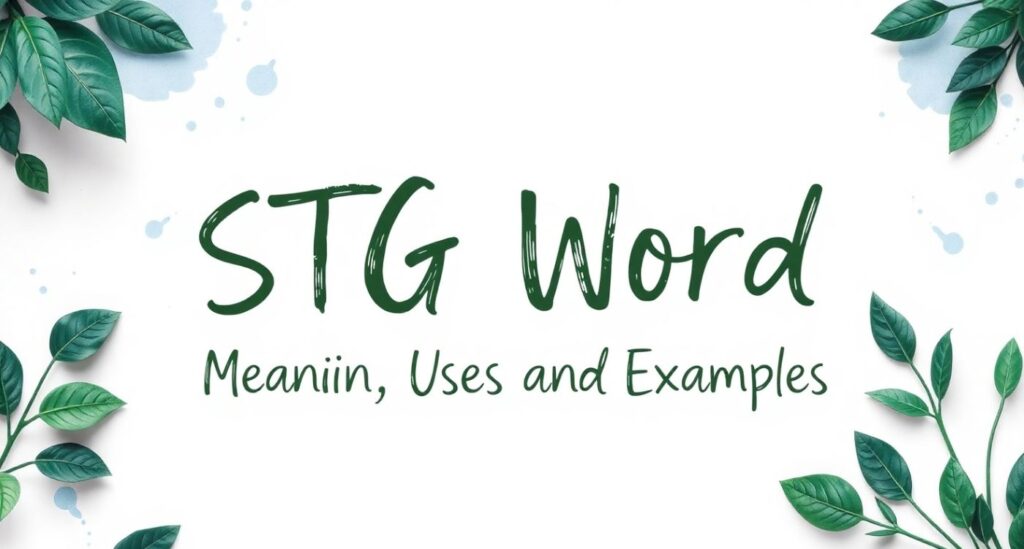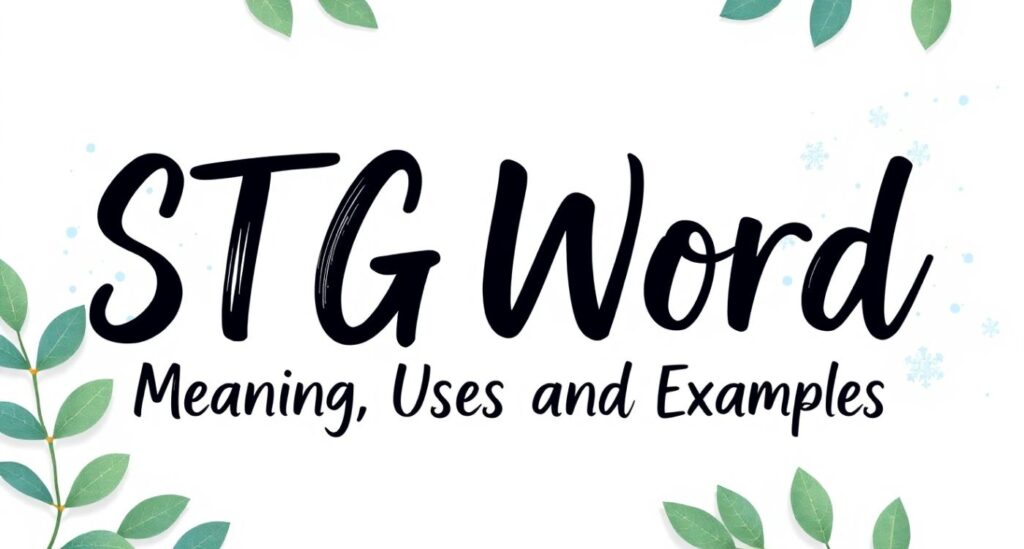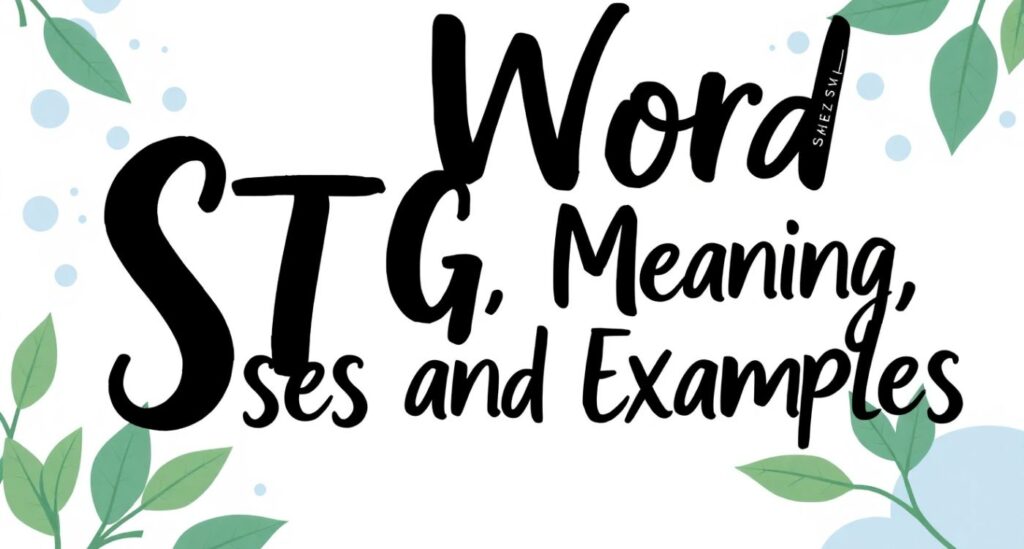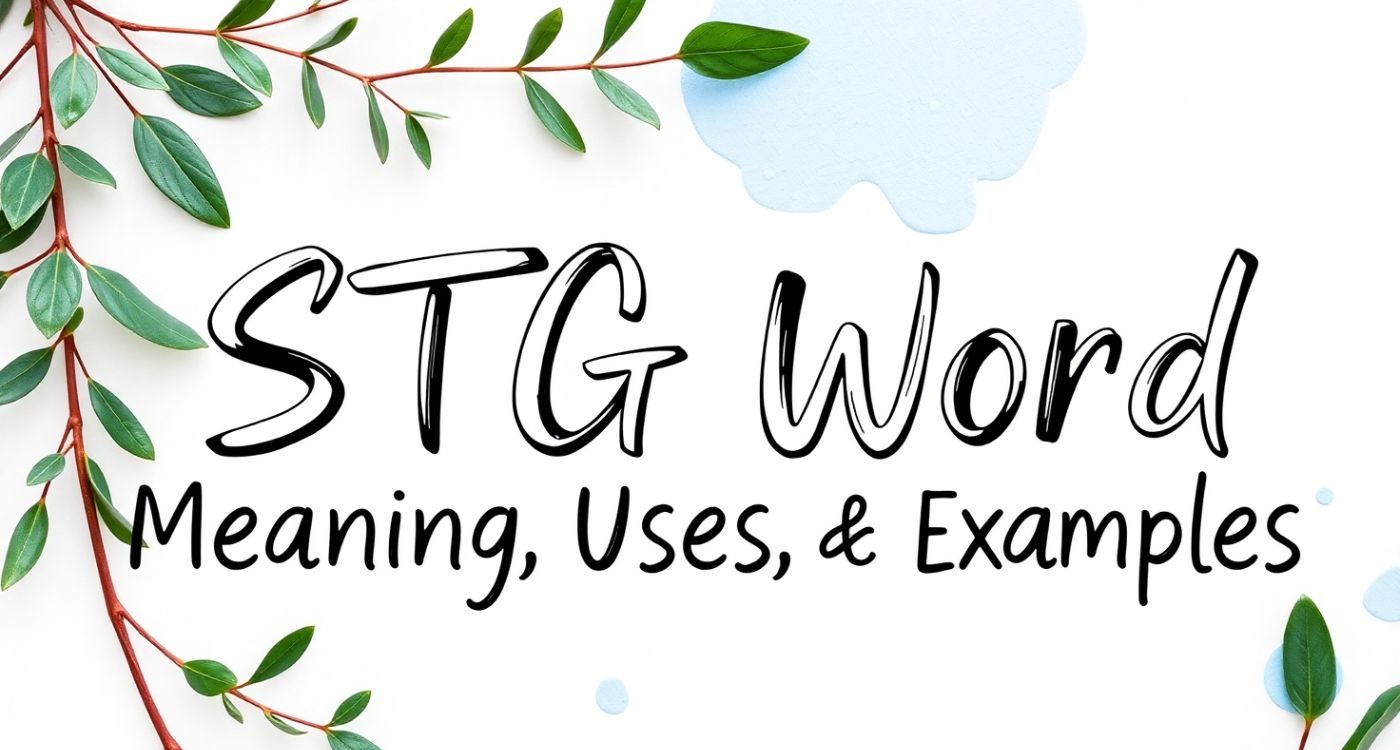If you’ve ever come across the abbreviation “STG” in a conversation, text message, or social media post, you might have found yourself scratching your head, wondering what it stands for. You’re not alone! Abbreviations and acronyms are everywhere in today’s fast-paced world of communication, and it can sometimes feel like there’s a never-ending list to keep up with.
In this guide, we’ll dive into the meaning of “STG,” explore its different uses, and give you practical examples of how it’s used in various contexts. Whether you’re communicating casually with friends, writing a professional email, or just curious about this particular abbreviation, this article will clear things up and offer you a comprehensive understanding of STG. Let’s get started!
What Does STG Mean?
At its core, “STG” is an abbreviation that has several meanings, depending on the context in which it’s used. The most common meanings include:
- Swear to God
This is by far the most popular and widely recognized interpretation of STG. It’s often used to emphasize the truth of a statement or express a strong promise. People use it to show sincerity, urgency, or make an exclamation in conversation. - Short-Term Goal
In the context of personal development or goal setting, STG can stand for short-term goal. This refers to objectives that are meant to be achieved in a relatively short period, often within weeks or months, as opposed to long-term goals (LTGs). - Standard Gauge
In more technical settings, such as railways, engineering, or construction, STG might refer to “standard gauge,” which is a specific width measurement for rail tracks. - Special Task Group
In the military or organizational settings, STG can be used to denote a special task group, a unit created for a specific purpose or mission, typically involving a team of highly skilled professionals.
While “Swear to God” is the most commonly used definition, it’s important to recognize that STG can vary depending on the situation, so always consider the context before jumping to conclusions.
When Do People Use “STG”?
Understanding how and when to use STG can make you seem more familiar with modern communication styles. Here are some key situations where the abbreviation STG is commonly employed:

1. Casual Conversations (Swear to God)
In everyday conversation, STG is used as a way to emphasize the seriousness of a statement or to make a promise. It’s often thrown into casual chats or text messages between friends and family. Here’s how it might look in a text exchange:
- Person 1: “I swear I’ll get the tickets, just wait a sec!”
- Person 2: “STG, you better not bail this time!”
Here, STG is used to emphasize the level of sincerity or urgency in the statement. It’s like saying, “I promise,” or “I swear on my life,” but much more casual.
2. Making Strong Statements (Swear to God)
STG is also used to express strong emotions or emphasize the truth of something. For example, it might appear in online posts or social media status updates:
- Post: “STG, this is the best pizza I’ve ever had in my life!”
In this case, the speaker is emphasizing their excitement and belief that the pizza truly stands out as the best.
3. Professional Contexts (Short-Term Goal)
In a work or academic setting, STG may be used to discuss personal objectives or goals. People in professional environments often set short-term goals to stay on track with projects, tasks, or career advancement. Here’s an example:
- Manager: “Let’s focus on achieving these STGs first. We’ll revisit the long-term plans next quarter.”
Here, STG refers to the immediate goals that can be completed in a relatively short timeframe.
4. Technical Settings (Standard Gauge)
In industries like construction, engineering, and transport, STG can refer to “standard gauge.” This is often used when discussing railways, where the standard gauge refers to the distance between the two rails of a track, typically 1,435 millimeters. Example in a technical setting:
- Engineer: “The new rail system will be built using a standard STG track to ensure compatibility with the existing network.”
5. Military and Specialized Contexts (Special Task Group)
In the context of military operations or specialized teams, STG may refer to a “special task group,” which is a team assembled for a specific purpose. These teams are often composed of elite professionals with specialized skills. For example:
- Commanding Officer: “The STG will be deployed for this mission. Their task is to gather intelligence from the area.”
Here, STG signifies a highly trained and focused team that is being assigned a specific operation.
Examples of “STG” in Action
To better understand how STG is used in different contexts, let’s look at more detailed examples in various scenarios.

Example 1: Casual Texting (Swear to God)
- Friend 1: “Did you get the tickets for the concert?”
- Friend 2: “STG, I’m about to buy them now. Hold on.”
In this scenario, Friend 2 uses STG to emphasize that they are genuinely going to purchase the tickets as promised.
Example 2: Academic Setting (Short-Term Goal)
- Professor: “For this semester, your STG should be to finish the initial research report by midterm.”
Here, the professor is guiding students to focus on short-term academic objectives, allowing them to make progress before tackling long-term projects.
Example 3: Business Communication (Short-Term Goal)
- Employee: “Our STG for the week is to finalize the client presentation and submit it for approval.”
In a corporate setting, employees often use STG to stay on task and ensure that immediate goals are being met within a specific timeframe.
Example 4: Technical Context (Standard Gauge)
- Engineer: “The construction of this bridge will use the STG specifications to match the existing infrastructure.”
Here, “STG” refers to the standard measurements that will allow the new structure to align with existing systems.
Example 5: Military (Special Task Group)
- Military Officer: “The STG will be tasked with retrieving sensitive documents from the enemy camp under cover of night.”
In this case, STG refers to a specialized group of soldiers trained for a high-stakes mission.
How to Use STG in Your Own Conversations
Now that we’ve explored different contexts where STG might be used, here are some tips for using it yourself in a way that feels natural and appropriate:

1. Keep It Casual with Friends
If you’re chatting with friends and you want to emphasize the truth of something or make a promise, STG can add emphasis. Use it to show you’re serious, but keep it lighthearted.
Example: “STG, I won’t let you down this time!”
2. Use It in Personal Goal Setting
If you’re discussing your goals, whether personal or professional, you can use STG to reference short-term objectives. It can be a helpful tool to keep you accountable and focused on tasks that need to be completed soon.
Example: “My STG this week is to finish writing the first draft of my novel.”
3. Avoid Overusing It in Professional Settings
While STG can be used in professional contexts, especially when discussing short-term goals, avoid overusing it in formal communication. Stick to full terms like “short-term goals” for more professional interactions.
Example: “We’ll focus on the STG for the upcoming quarter and outline our plans for the long term.”
4. Mind the Audience
Always be aware of your audience. While STG might be perfectly acceptable in casual text messages with friends, it may be less appropriate in formal business meetings or official communications.
Final Words
STG is an abbreviation with various meanings, and its usage can vary depending on the context. Whether you’re using it to emphasize a promise (“Swear to God”), talking about short-term goals, or discussing technical specifications like “standard gauge,” understanding when and how to use STG can help you communicate more effectively in different situations.
The most important thing is to pay attention to the context and tone of the conversation. When in doubt, you can always clarify what you mean, especially if you’re not sure which meaning your audience will interpret. And remember, abbreviations like STG can add a bit of flair to your language, but they should be used thoughtfully to ensure clear and effective communication.
We hope this guide has helped demystify STG for you. Next time you see or use this abbreviation, you’ll know exactly what it means and how to use it like a pro!









